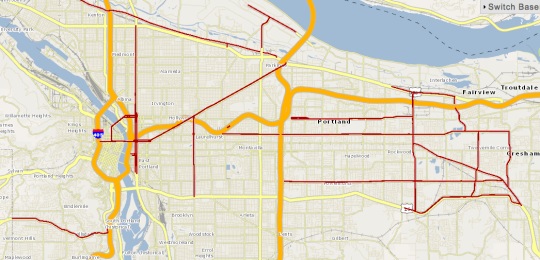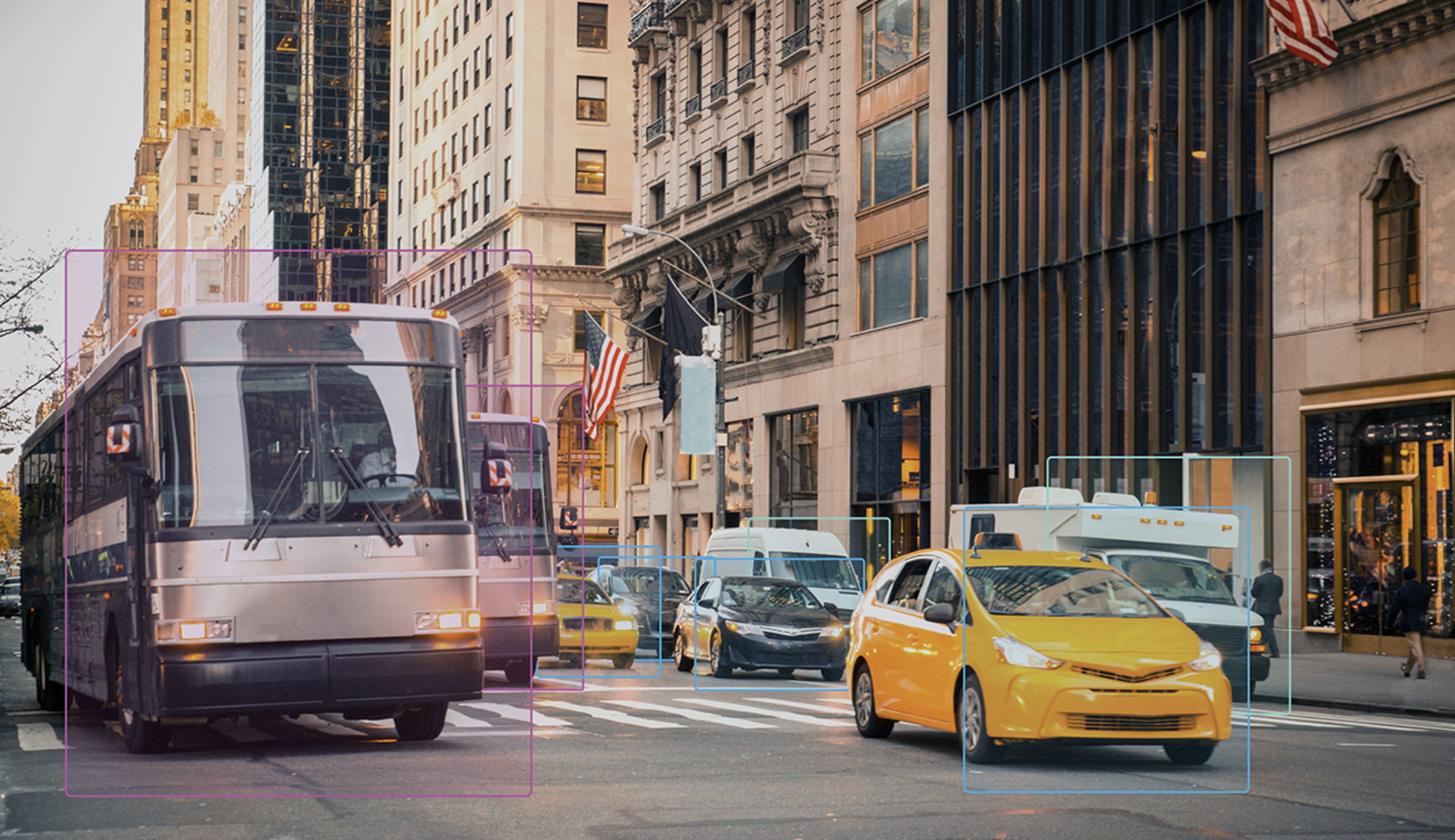
An obscure provision of the new federal transportation bill is sparking concerns that it could erode walkability and bikeability in communities around the country. The so-called "Enhanced National Highway System" provision would require all major arterial roads to be folded into the national highway system. That could provide greater pressure for local entities to comply with AASHTO's often highway-inspired standards, like wide lanes and shoulders that encourage car capacity at the expense of pedestrian safety.
The provision will result in a near doubling of the number of roads that will be part of the national highway system. But what will it mean for livable streets? There are lots of different opinions out there.
Jonathan Maus, at Bike Portland, who broke this story, said:
The significance of these roadways becoming part of the National Highway System is that if PBOT engineers want to make any changes that deviate from FHWA design standards for "principal arterials", they would have to go through a cumbersome process of applying for exceptions.
In the words of a source at ODOT, "this designation basically forces state and local governments to treat arterials like major highways... Speed will increase, certain designs, like bulb outs, won't be allowed without an exception. So on and so on."
Travis Brouwer, senior federal affairs adviser for the Oregon Department of Transportation, echoed those concerns to some extent. Brouwer said the state was racing to reclassify its major arterials, up to 600 miles of road, by October 1, when the new law goes into effect.
"Those are roads that are likely highly trafficked by bikes and pedestrians and cars as well," he said. "A lot of these roads are local roads that serve as main streets."
But Kevin DeGood at Transportation for America is skeptical that the new provision will be quite that far-reaching. DeGood said that for most states, there will be no difference in the AASHTO guidelines states already apply for arterials and the new NHS-grade arterial roadways. The AASHTO Greenbook, sometimes called the bible of transportation planning, doesn't have any special requirements for NHS roads, though it does have guidance for major arterials.
"There is some gray in there; it's as much about state interpretation as it about U.S. code," DeGood said. "It might depend a lot on states, [which] could take narrowest possible interpretation."
However, David Goldberg, T4A's communications director, added that some states "might use this as a dodge," to say they can't build complete streets on certain roadways because they are classified as part of the national highway system.
An official from FHWA told Streetsblog that the provision would only apply to newly constructed or rebuilt arterials, not existing ones. She added that the new rule would allow states to access federal funding for the newly classified arterials, the apparent motivation for the rule.
FHWA is willing to work with states on the new guidelines, ostensibly to provide exemptions from AASHTO standards in circumstances where pedestrian or cycling issues would warrant it, she added. She declined to elaborate because the agency won't issue guidance until October 1.





